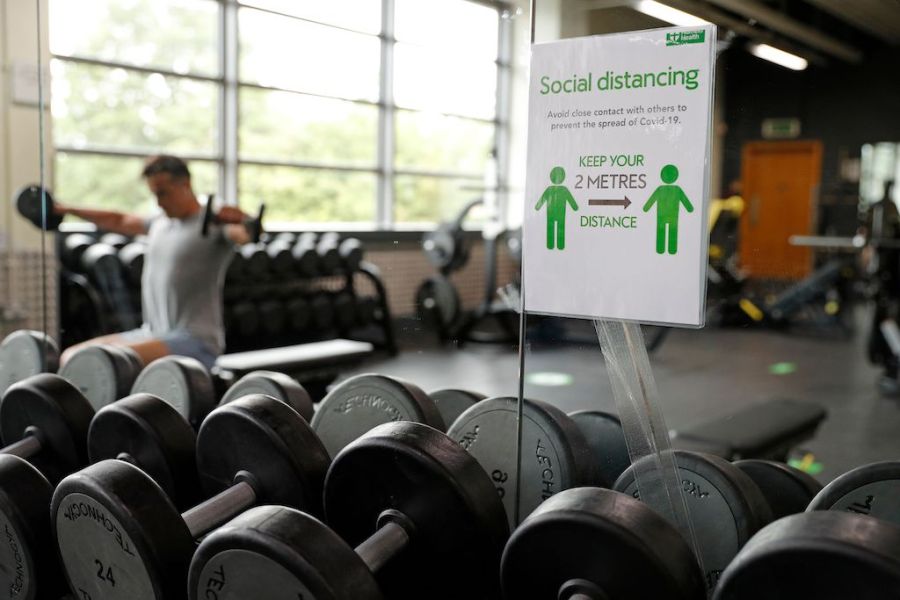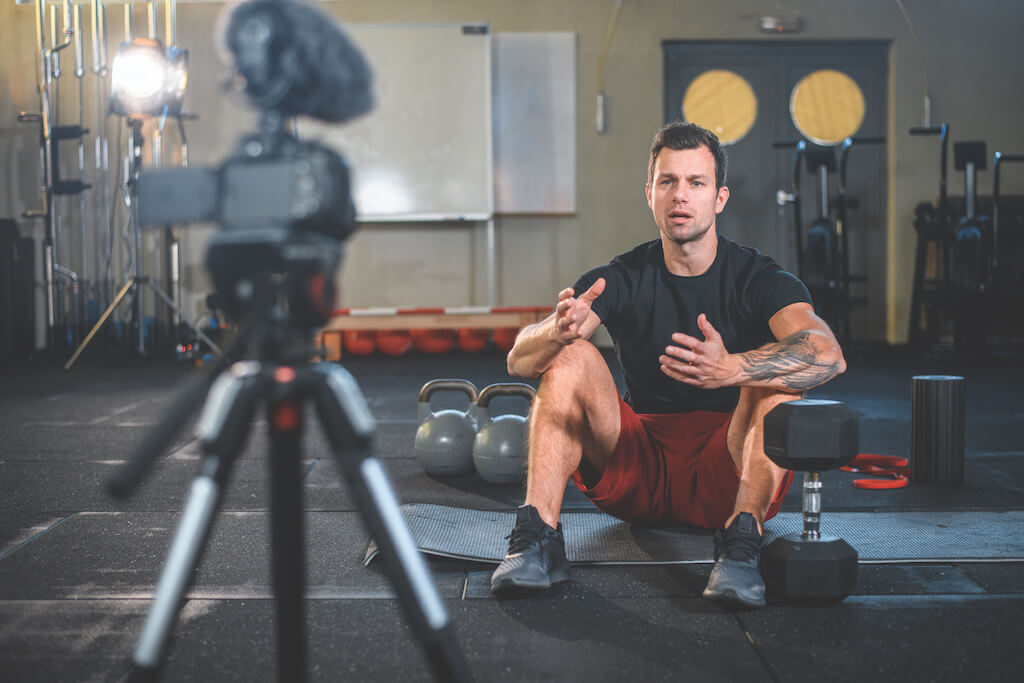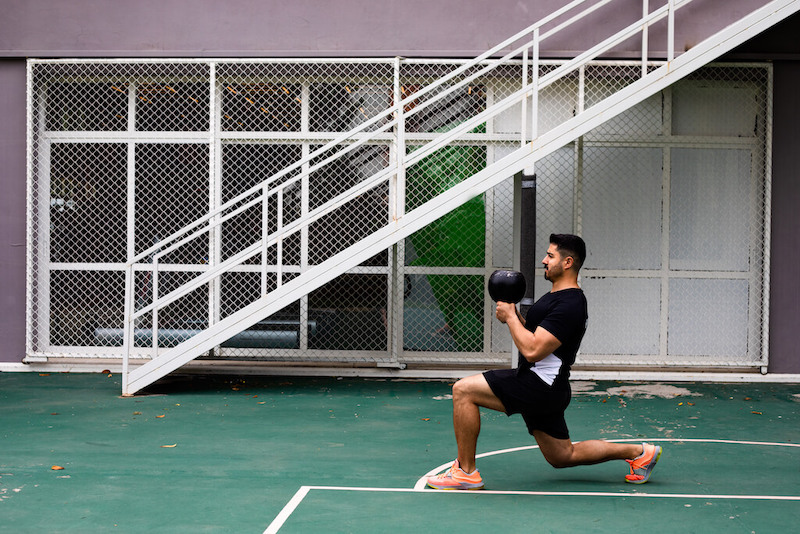Your guide to gym safety and best practice during the COVID-19 pandemic.
Lockdown was a hammer blow to the fitness industry, and the landscape will never be the same again. Some gyms closed forever after spending months out of business. Others were able to pivot well, offering online coaching, or were large enough to absorb the hit.
Although many have reopened their doors after the extended lockdown period, most gym floors are a far cry from being the bustling hubs they once were. With restricted entry, shorter opening times, frequent sanitising and social distancing in place, the experience feels sterilised in more ways than one.
Despite government guidelines informing gyms on how to keep us safe, and the venues enforcing their own ideas of best practice, unanswered questions linger for prospective gym-goers who remain on the fence about returning to their old haunts.
We’ve attempted to answer some of those questions by looking at the science, speaking to the experts and identifying the New Rules of Fitness, designed to keep you safe and happy as we navigate this new normal.
1. Keep Your Distance
According to researchers from the University of Chicago, up to one-third of adults will experience chronic loneliness, described in the study as ‘the social equivalent of hunger or thirst’.
This unhappiness leads to diminished sleep, cardiovascular problems and an increase in early mortality. In an era of boundless digital connectivity, making real friends is more difficult than ever.
Like pubs, barbers and hobby shops, gyms often served to pick up the slack. Large or small, gyms foster a sense of community, especially if you attend regular fitness classes and sweat alongside the same faces every week.
However, for the foreseeable future, that’s about to change.
“Gyms are an inherently social space, and they may have to become uniquely training-orientated for the time being,” says Dr David Haw, an epidemiology research associate at Imperial College London’s School of Public Health. Alongside his work, he’s also a powerlifter and group fitness instructor.
“I know some gym chains that are no longer allowing any pair work, like spotting, to take place,” Dr Haw continues.
The world can be very isolating as you drift around in a one-metre bubble. Before coronavirus, sharing a piece of kit with someone, or asking a fellow gym-goer for a spot, was a great way to build a connection, in addition to pushing limits hard to reach when training alone.
But now form checks from personal trainers involving physical contact are out of the question, as is boxing pad-work or holding your partner’s toes while they do sit-ups.
The safest thing to do, for both you and your prospective training partners, is to keep your distance, which is why it’s the first New Rule of Fitness you need to be following right now.
2. Stay Connected
Perhaps we should specify the need to be physically distant versus the need to be socially distant. From Zoom pub quizzes to remote working, we’re moving much of our social lives from physical space to cyberspace, and gyms are no different.
“The internet holds no bounds,” says Sam O’Sullivan, managing director of elite Cardiff coaching facility SOS Athletic Excellence.
“What COVID-19 has done is speed up what was always going to happen, with home workouts and remote coaching adding flexibility to training programmes. We just didn’t think it would happen in 2020.”
O’Sullivan’s team moved quickly when lockdown hit. Like most trainers, they began offering home workouts on Zoom and Facebook Live in lieu of their usual schedule, five times a day.
But they also used YouTube to record all the exercises needed in their training programmes, compiling the videos into a fitness app.
Not only did they pivot quickly during their moment of crisis, but they’re ready should another wave of COVID-19 cases shut their gym again. “If we go back into lockdown, we’ve got 20 weeks of programming ready to go,” says O’Sullivan.
Personal trainers, yoga teachers, martial-arts schools, dance studios – fitness professionals of all disciplines have embraced the new normal and begun offering online-only classes.
A poll by insurance agency InsureforSport of 988 PTs found one-quarter of them are now offering online-only classes.
While the reopening of gyms and fitness studios have brought some semblance of normality back to our lives, the extremely limited times and facilities are leaving fitness fans unfulfilled.
So our second Rule is to stay connected, using online programming to supplement and add to your existing gym work. This will take the strain off many gyms as the pandemic eases, preventing members from being turned away at the door.
3. Get the Job Done
At time of writing, Puregym – Britain’s largest gym chain – is no longer offering 24-hour service, reducing its opening hours and limiting the amount of members it will allow in at any one time.
This number changes venue-by-venue – O’Sullivan tells us the guideline he’s been given is “one member per 100 square-foot of space in the venue”.
Fitness classes will also look very different, with distanced stations meaning some equipment will be removed or left empty.
There will be no idle chit-chat before and after class, preventing gatherings in hallways and staircases, and extra time left between classes to sanitise equipment.
With limited time in which to train, you’ll no longer be able to hog the squat rack for two hours, working your way through pyramid sets. The way we train is going to take a hit.
“Prior to lockdown, it would be commonplace to walk to the other side of the gym, grab a 10kg plate and put it back somewhere else,” says Haw.
“Now we’ll need to be more organised in how much equipment we touch and how we pass that equipment around.”
Our next Rule is to open the bottleneck, allowing everyone time to train. We do this by getting the maximum amount of training done in a very short amount of time, and making some sacrifices.
Pining for that weight plate someone else is using? You might have to do an extra set or two to overload your muscles, rather than wait for the larger weight to become available.
Every minute you’re in the gym is a minute someone else can’t be there.
4. Vent Your Feelings
One of the best ways to minimise your coronavirus risk is to train in well-ventilated spaces. Deadlifting next to an open window in the gym, with no-one else around, would be considered a low-risk activity (provided you wipe your bar down before and after).
However, being crammed in a poorly-ventilated spin class with nine others would be considered, of course, high-risk. Bear this in mind when training.
Needless to say, the best ventilated place in the world is the great outdoors. Without gyms, fitness buffs have been re-learning to exercise outside, whether it’s outdoor classes, running or pull-up bars.
You might have found a tree in the local park perfect for hanging rings off, or got into running – really got into it – for the first time.
Now you’re able to enter the gyms again, don’t forget these lessons. Where you would have ordinarily had three or four gym days, supplement one or two a week with an outdoor session.
You can train outside with friends – a practice currently prohibited in gyms – and it frees up that vital gym space for other members. Even if the weather’s bad, you can still opt for a home workout or a run in the rain.
It’s not ideal, especially for anyone with a penchant for lifting heavy weights, but for now you’ll have to schedule your workouts smartly and make the most of your limited gym time: working out in well-ventilated areas where you can and making good use of the great outdoors when you can’t.
5. Tough It Out
“The situation will change with new information, but certain hygiene measures might be here to stay,” says Haw. “But that’s not necessarily a bad thing; who doesn’t want a cleaner gym and more space to train in?”
The World Health Organisation has stated a coronavirus vaccine isn’t expected to be widely available until early-to-mid 2021.
Of course, the situation will change as the government issues new guidelines in response to new information, but until then, safety measures of some description will continue to remain in place.
It’s tempting to become apathetic. Perhaps after the first time you forget to sanitise your equipment after you use it you become much less rigorous, given it’s had no immediate repercussions for you.
After a few months, perhaps you decide to take other people’s personal space a bit less seriously on the gym floor, or shut the open windows to keep out the winter cold.
Our final Rule is to stay vigilant and tough it out. You must remember it’s not just your own home comforts at stake: it’s the lives of other gym members, staff and the vulnerable people they’re connected to – lives you wouldn’t ordinarily think about.
Your actions can have a very real impact, so until science solves this problem, the onus is on you to follow the New Rules of Fitness and safeguard their wellbeing.
Good luck, train hard and please gym responsibly.
Words: Vic Sage












